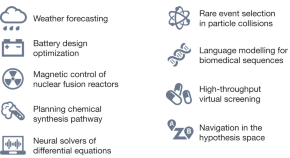

This Review examines the diverse strategies utilized by naturally occurring antibiotics and suggests how they have provided, and will in future provide, inspiration for the design of novel antibiotics.

This Review considers developments in enzymes, biosynthetic pathways and cellular engineering that enable their use in catalysis for new chemistry and beyond.

This Review discusses the importance of genetic and non-genetic reprogramming events during the metastatic cascade.

The interplay between cryo-electron microscopy and cryo-electron tomography to define complex macromolecular assemblies and visualize them in situ is explored.

This Review describes the various mechanisms of ion-coupled transport across membranes and how the activities of transporter proteins are modulated by the composition of the lipid bilayer.

This Review explores in detail the complexity of NK cell biology in humans and highlights the role of these cells in cancer immunity.

We suggest that as mitochondrial signals probably contribute to the homeostatic role of inflammation, dysregulation of these processes may lead to autoimmune and inflammatory diseases, with increasing evidence pointing to the recent failure of endosymbiosis being crucial.

Structural studies of amyloid filaments purified from brains of people with neurodegenerative diseases link specific amyloid folds with distinct diseases and provide a basis for the development of models of neurodegenerative disease.

This Review provides a perspective on the development of non-cancer therapies based on human genetics studies and suggests measures that can be taken to streamline the pipeline from initial genetic discovery to approved therapy.

The advances in artificial intelligence over the past decade are examined, with a discussion on how artificial intelligence systems can aid the scientific process and the central issues that remain despite advances.

This Review addresses the current understanding of the roles of tissue-resident macrophages in physiology and disease, including their development and their functions in tissue remodelling and nutrient recycling.

The current state of the art of topological phenomena in photonics and acoustics is reviewed and future research directions for valuable applications are discussed.

This Review examines the interplay between the nervous system and tumours, from cancer initiation to progression and metastasis.

This Review examines the palaeobiology of Australopithecus in terms of morphology, phylogeny, diet, tool use, locomotor behaviour and other characteristics, and considers the role of this genus of hominins in human evolution.

Recent advances in computational approaches and challenges in their application to streamlining drug discovery are discussed.

Examination of available evidence on whether anthropogenic global warming was preceded by a long-term warming trend or by global cooling provides support for a relatively mild millennial-scale global thermal maximum during the mid-Holocene.

A review of current river ecosystem metabolism research quantifies the organic and inorganic carbon flux from land to global rivers and demonstrates that the carbon balance can be influenced by a changing world.

Recent key developments in the exploration of kagome materials are reviewed, including fundamental concepts of a kagome lattice, realizations of Chern and Weyl topological magnetism, flat-band many-body correlations, and unconventional charge-density waves and superconductivity.

Anatomical, cellular and molecular immune interactions at the borders of the central nervous system control homeostatic brain function and can lead to neurological or psychiatric diseases, representing potential therapeutic targets.

The processes that distributed life-forming volatile elements throughout the early Solar System and how they then became incorporated into planetary building blocks are reviewed.